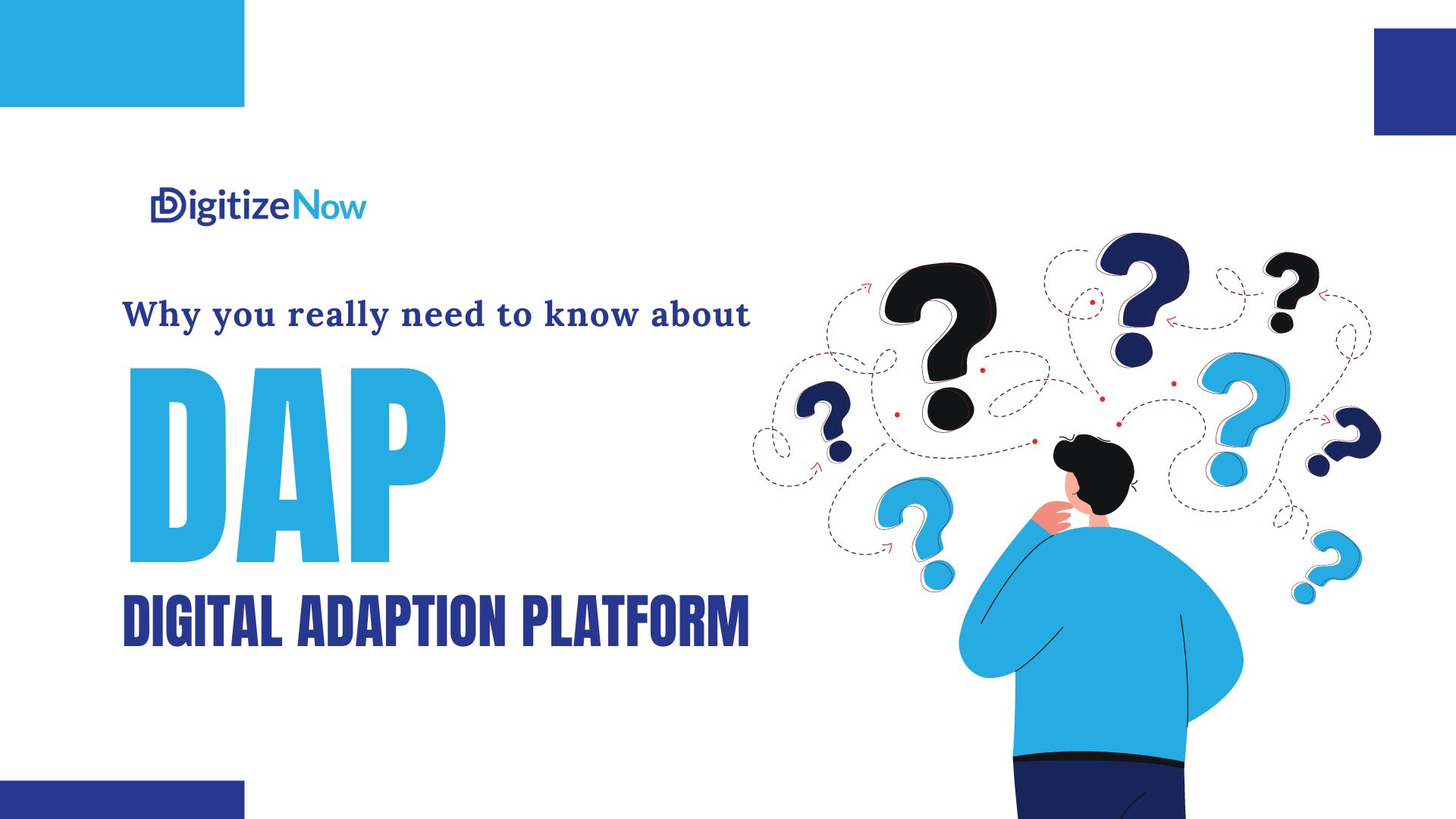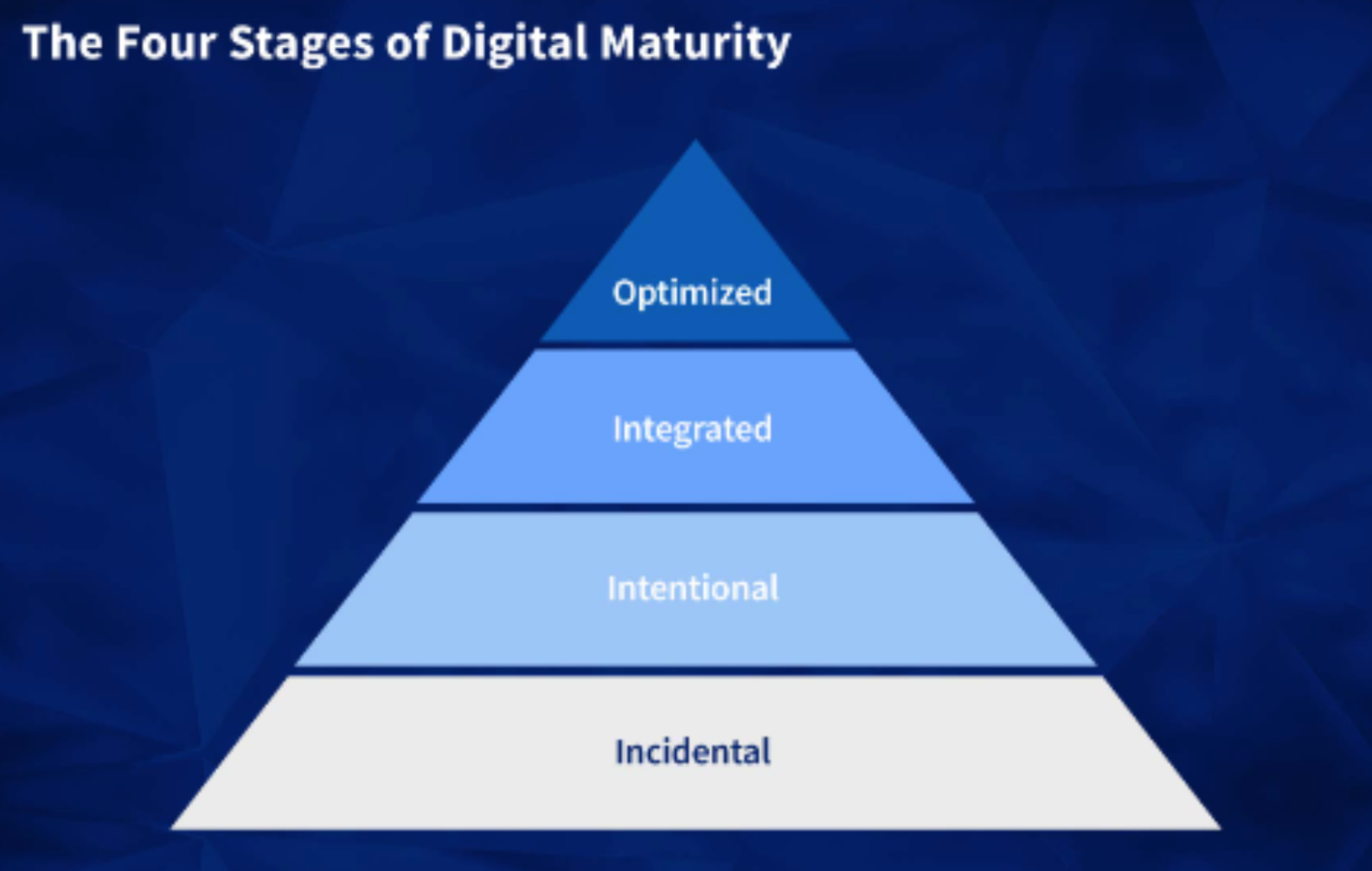The need for companies to constantly evolve and adapt themselves to the changing market dynamics isn’t a new concept. Since time immemorial, with every new change in consumer demands, technologies, and even socio-political factors, companies have had to adapt to the changing scenario. And market changes of today have made it necessary for companies to focus their operating models on a solid digital transformation strategy.
Interestingly, digital transformation has been the most significant support to facilitate the process. It basically has revolutionized businesses. With the integration of digital technology into all aspects of a company, digital transformation has fundamentally changed how it operates and delivers value to customers. The guiding light lies on the path of efficient and well-planned digital transformation strategies.
Why do you need to know about DAP before applying it as a digital transformation strategy?
Understanding the fundamentals of a Digital Adoption Platform (DAP) is crucial before integrating it into a digital transformation strategy.
DAPs, a software application, helps users become proficient in utilizing digital tools and technologies. It provides:
– Guidance
– Interactive tutorials
– Real-time assistance
All of these helps facilitate the adoption and integration of various software applications within an organization to maximize their efficiency and effectiveness.
Utilizing DAPs, businesses can reap the benefits of digital transformation services, and for the same, an in-depth comprehension of DAP capabilities, functionalities, and implementation processes is essential. This knowledge helps align the platform’s features with specific business requirements.
A thorough grasp of DAPs enables businesses to make informed decisions about their implementation. This supports and accelerates the digital transformation service processes, ultimately leading to successful integration and improved business performance.

How is DAP integral to the digital transformation strategy?
The importance of digital adoption platforms for companies undergoing digital transformation in the rapidly evolving digital landscape cannot be overstated. Digital transformation facilitates innovation, agility, and adaptability, allowing companies to meet growing customer demands, optimize operations, and create new business models, thereby ensuring long-term sustainability and growth.
As a partner, a reliable digital adoption platform is needed as part of their digital transformation strategy to aid the process.
Moreover, DAPs provide businesses the opportunity to streamline their operations and maximize the ROI of their technology investments. DAPs are an excellent boost for revenue maximization and an essential digital transformation strategy by expediting the onboarding process, minimizing training costs, and enhancing employee productivity. Since DAPs enable faster technology adoption and utilization, it leads to increased operational efficiency.
The seamless integration of DAPs facilitates a smoother workflow, leading to improved business outcomes, cost savings, and a more significant digital process. It provides valuable insights into user behaviour, allowing businesses to optimize and improve the customer experiences. When used correctly, it’s a powerhouse of advantages that can generate a great boost for the company.
5 steps for DAP implementation for a successful digital transformation strategy
It is necessary to align digital adoption platforms with the business, and for that, leaders must navigate the process with clarity. Here are five critical steps, based on insights and data from several successful adoptions, that have proven to be essential before proceeding with DAP implementation:
Acknowledge transformation challenges
Implementing a DAP requires acknowledging the challenges of digital transformation. It must be one of the top priorities when it comes to formulating your digital transformation strategy.
There could be potential challenges like resistance to change, technological constraints, and cultural shifts within the organization. It is possible to face such complexities from various sources within an organization, and all of this could pose a threat to a successful digital adoption platform integration.
Once the challenges are acknowledged, organizations can develop comprehensive strategies to address them, including providing adequate training, fostering a culture of adaptability, and ensuring alignment of every resource with the objectives.
The ultimate aim is to help businesses create tailored implementation plans for the transformation journey, thereby minimizing disruptions and ensuring a smoother integration of the DAP.
Articulate a clear vision
One of the critical factors for success in any project is having a clear vision about where you wish to reach and how you plan to do it.
Having a clear vision is necessary, and that involves establishing a comprehensive and coherent roadmap that outlines the specific goals and outcomes of implementing DAP. And once the leaders are clear about the same, aligning the entire team with the vision is important. This is an important focus of the digital transformation strategy.
Moreover, this helps organizations effectively communicate the purpose and benefits of the DAP to all stakeholders, including employees, management, and investors. This is a necessary step for aligning everyone and making the most of the benefits of the platform.
Establish a solid digital foundation
A solid digital foundation requires laying the groundwork for a robust and adaptable digital infrastructure that can effectively support the integration of a digital adoption platform.
According to a survey by TechRepublic, 39% of companies are challenged by integration issues, and 34% struggle with resistance to change. This makes it crucial for businesses to evaluate the existing technological framework, identify potential gaps, and implement necessary upgrades to ensure seamless compatibility with the DAP.
A must-have priority in the digital transformation strategy agenda, solidifying the digital foundation is a step towards building a resilient framework.

Empower and engage employees
Fostering an inclusive and supportive work environment encourages open communication, ongoing learning, and active participation in the digital adoption process.
Creating a collaborative culture that values employee input and contributions is an integral part of the digital transformation strategy. When employees feel valued, they become more compatible with change. It is necessary to ensure that every department feels positive.
So, whether it is designing strategies for change management for IT, HR, sales, customer care, or any other department, the focus should be on highlighting the benefits involved in order to empower your employees.
Monitor, measure, and refine
Utilizing analytics tools to track key metrics such as user engagement, adoption rates, and training effectiveness is necessary for the digital transformation journey.
This data-driven approach enables organizations to identify areas for improvement and make informed decisions as a part of the digital transformation strategy. With the help of these data, organizations can also understand how employees interact with the DAP, enabling businesses to tailor the platform’s functionalities to meet user needs and preferences better.
Finding employee proficiency and workflow efficiencies are necessary to decode digital adoption platform integration success and plan for continuous improvement and long-term success.
Remember, digital transformation is not a destination but a continuous transformation journey. The more defined and precise the digital transformation strategy is, the better the chances for successful adoption and alignment with the various stakeholders in a business.
The seamless integration of DAPs facilitates a smoother workflow, leading to improved business outcomes, cost savings, and a more significant return on investment.
The adoption of digital adoption platforms is instrumental for companies seeking to maximize the benefits of digital transformation. To meet the demands of the markets of today, facilitating the integration of new technologies is crucial to enhance employee productivity and improve the customer experience, both of which are necessary to support business growth.
Embracing digital adoption platforms is not just a strategic choice but a necessary step for companies to remain competitive and relevant today.



